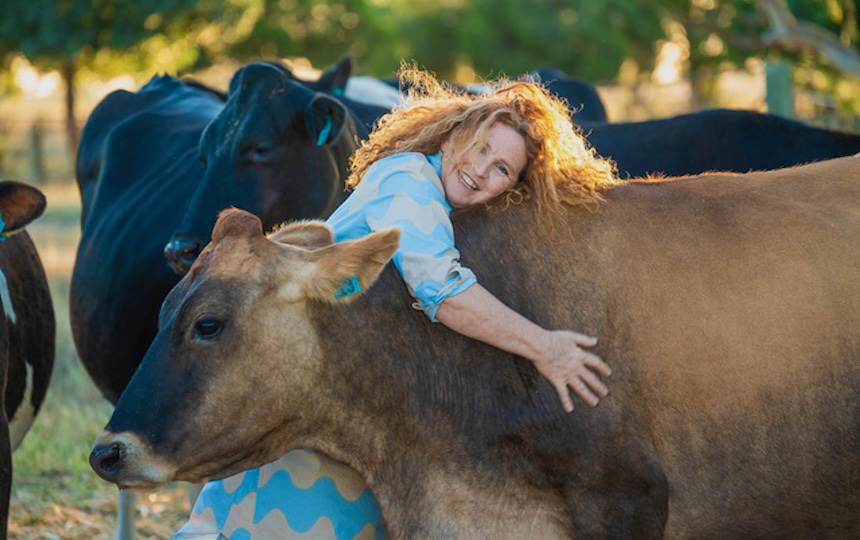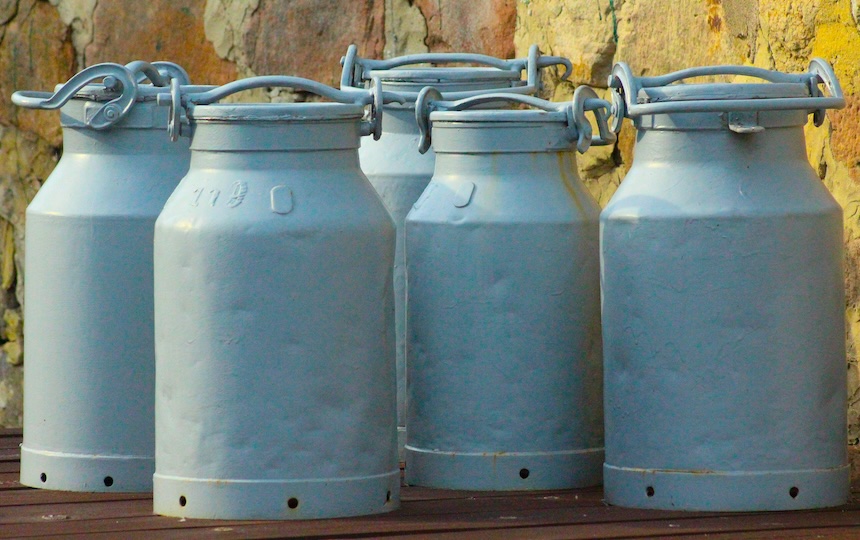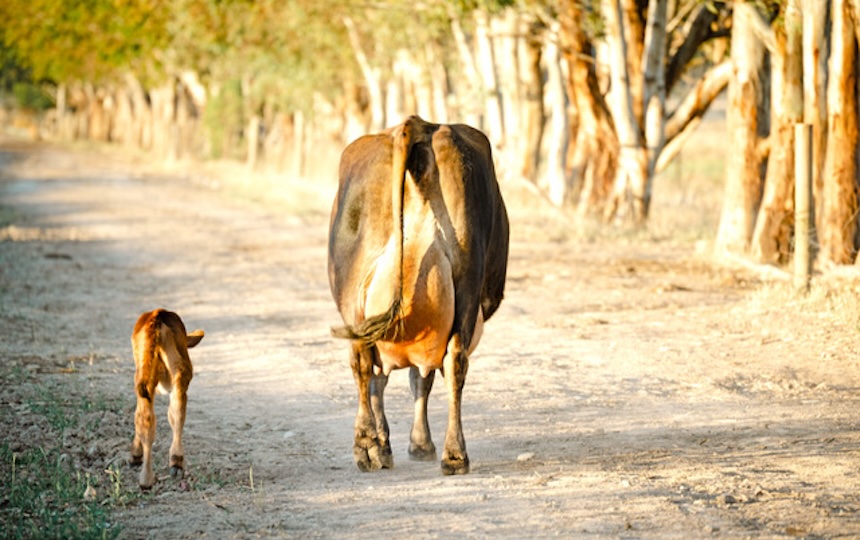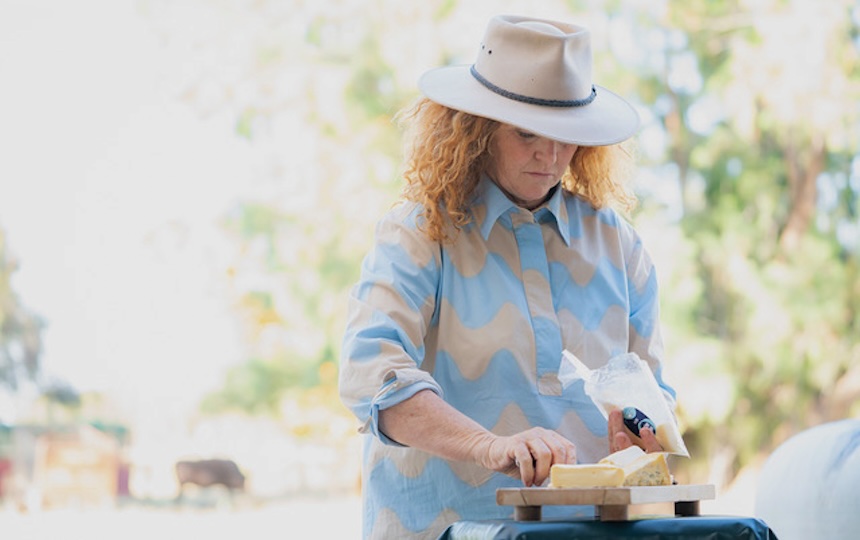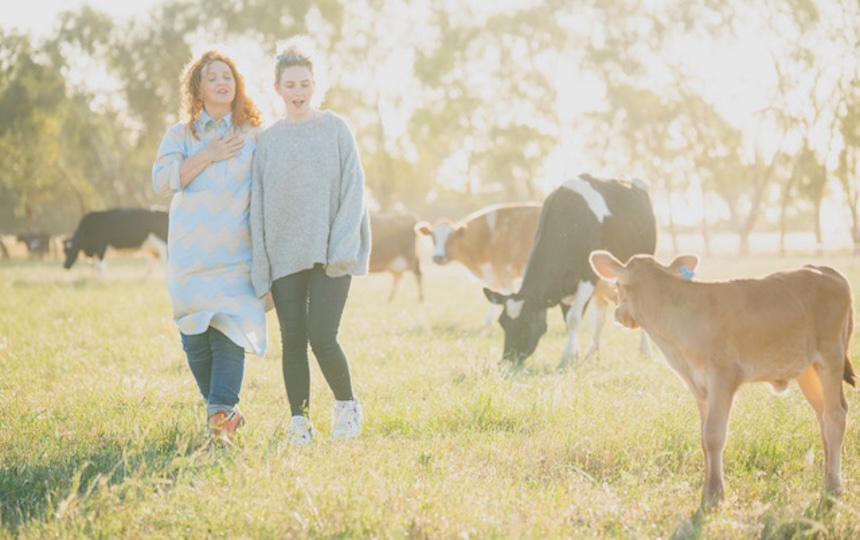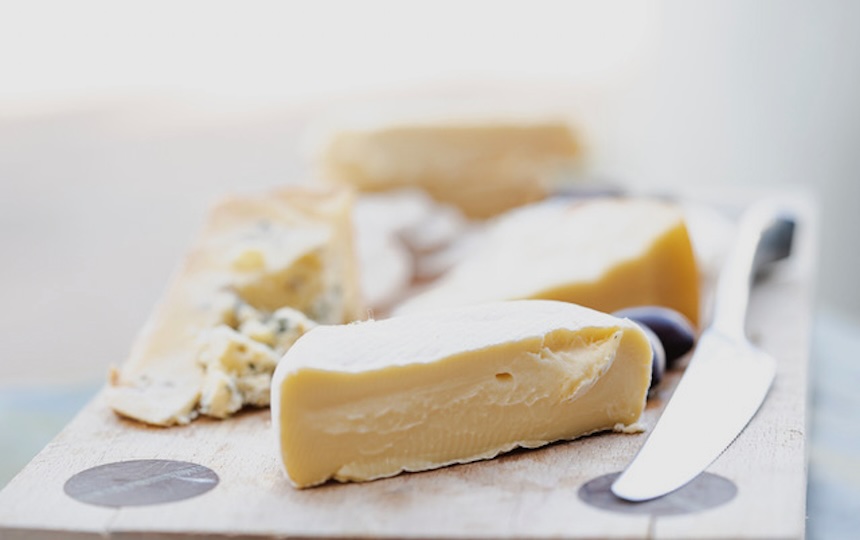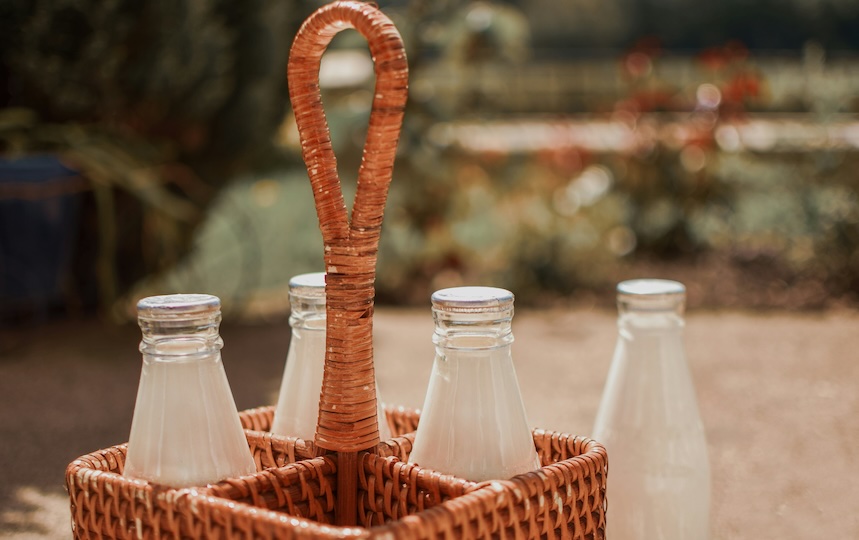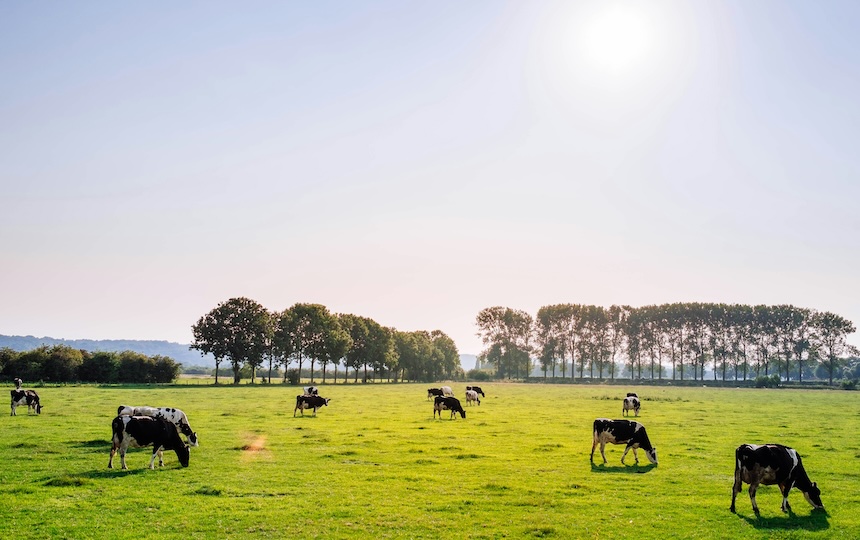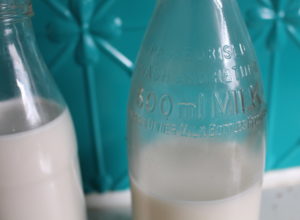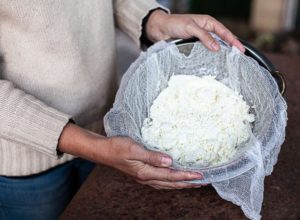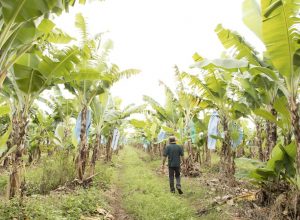We chat to How Now Dairy owner Cathy Palmer about her “kind milk” and discover exactly what it is that makes her milk kind.
Five years ago, music industry executive and animal activist Cathy Palmer had never stepped foot on a dairy farm. Today, she’s the owner of an ethical dairy that’s not only practising regenerative techniques and following organic principles, but is the only dairy in Australia which allows cows and their calves to stay together after birth.
How Now Dairy is 64-acre farm in northern Victoria pushing back on the widely used practice of separating dairy cows from their calves 24 hours after birth. While cows need to give birth to a calf in order to produce milk, according to Cathy, something in the region of half a million five-day-old calves are sent to slaughter every year in Australia alone, all in the name of cheaper milk prices.
A dedicated animal activist, Cathy hasn’t eaten meat since she was a child, but she credits a chance conversation with a friend shortly after becoming a new mum that set her on a path of going against the accepted traditions of dairy farming in this country and introducing a more ethical way of caring for livestock.
“He simply told me to ‘Google bobby calf”. I did, and that simple act changed my life forever,” Cathy reveals.
A new approach to dairy farming
Using artificial insemination, How Now Dairy can ensure all the calves born on the farm are female, meaning not only do they get to stay with their mums where they’re not weaned until they’re at least four months old, but they eventually become milk producers themselves. It’s now one of less than 10 dairies in the world farming the same way.
“With no experience, I was just told, ‘This is the way it’s always been done’,” Cathy recalls. “I’d been told cows abandon their calves, they become aggressive, and they hold their milk. So, I learned everything I could from online studies about cow and calf separation and realised all of this was untrue.”
“Instead, they completely changed and became placid, loving, sharing, trusting animals. I learned the most from the cows and their gentleness in handling their calves.”
From the paddock to the bottle
Early in the piece, the milk from Cathy’s cows would be transported to Melbourne where it was bottled and distributed to retail outlets. More recently, Cathy sold her home in Melbourne to raise the capital required to set up the dairy’s own micro-processing plant where the milk can be bottled directly from the farm.
“And I have now also moved into cheese,” adds Cathy. “The one thing I always struggled to go without.”
The particulars of ‘kind milk’
Adding to availability through farmers’ markets, How Now’s growing number of retail outlets stocking its products – plus a list of cafes pouring the milk – can be found on its website, as can a full list of the dairy products made with what Cathy aptly refers to as her “kind milk”.
“The concept of kind milk was borne from a desire to be able to enjoy dairy guilt free,” says Cathy. “Kind to the cows by keeping cow and calf together and sharing the milk. Kind to the environment by following regenerative farming practices and organic principles. Plus, kind to farmers. For How Now to expand it will be done with like-minded farmers with small cow numbers and they will be paid the true price for their milk.”
We chatted to Cathy more about her “kind milk” and discover just how steep the learning curve was to become a dairy farmer.
Why is the practice of taking calves from their mother so entrenched and how do you get around that problem?
“I think it is entrenched because the dairy industry has done a stunning marketing job. They even manage to use calves in promotional shots and people are nonplussed. If the average person could see a dairy farm with the newborn calves being scooped up by farmers every morning during calving times and kept in a shed for five days before being trucked to an abattoir, it would change overnight,” says Cathy.
“To see the reality of their lives and the cows who are kept pregnant to have a calf every year, just to see yet another calf forcibly removed immediately after birth, I think it’s like showing chickens in cages and pigs in sow crates, the industry would have to change rapidly. I always say consumers have the power!”
Tell us about the learning curve of becoming a dairy farmer.
Massive learning curve there! I grew up in the suburbs of Melbourne, and had never spent any time on farms, so I knew absolutely nothing about cows,” says Cathy.
“I never had any desire to be a dairy farmer and I had never been on a dairy farm until five years ago… then here I was with a tiny herd of (18) jersey cows, no experience and being told, ‘This is the way it’s always been done’… cue the red flag!”.
“So, I learned everything I could from online studies about cow and calf separation, and learned how amazingly gentle they are handling their calves.”
Do you do the milking yourself?
“When I started, I was scared to milk a cow. I left it to the guys who knew what they were doing. I used to just watch the cows all the time (still do) and observe their behaviours, and I would often be thinking they didn’t seem to like this or that. But I discounted what I saw because I hadn’t been a dairy farmer,” says Cathy.
“Then I thought, ‘To hell with it, how hard can this be!’ Since then, I’ve never looked back. I would love to milk every day, but running the business can keep me away from the dairy for days at a time. But whenever things get too much, or stressful, the first place I head to is in the paddock with the cows and their calves.”
“I just lay down and within five minutes I will have them all sniffing and licking and it just gives me such a bolt of joy and the biggest smile.”
How was the journey ultimately deciding to leave the music industry and start farming?
“It was madness! I had had my daughter and was looking for change as the music industry is not exactly ideal working hours for a new mum. It was that chance conversation with a friend (who grew up on a dairy farm) who was surprised to see me consume dairy, as I’d always been an animal activist and hadn’t eaten meat since I was a kid,” Cathy reveals.
“Five hundred thousand five-day old calves are sent to slaughter every year in Australia, so that consumers can have cheaper milk. I Googled all kinds of ethical milk and rang every milk company and was absolutely devastated to find I had been supporting the biggest secret of the food chain. But there were no alternatives,” she says.
“I am stubborn and decided I would prove that people care. That set me on the path of dairy farming and becoming a dairy processor.”
“I sold up my house in Melbourne and put everything I had into creating my micro processing plant where we bottle all the milk direct from the farm.”
You can find out more about How Now Dairy by visiting their website here.

